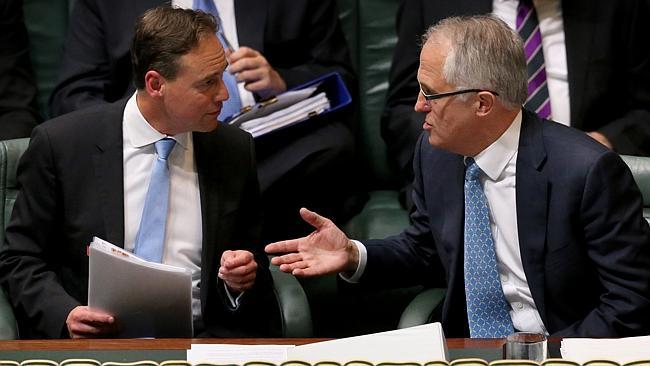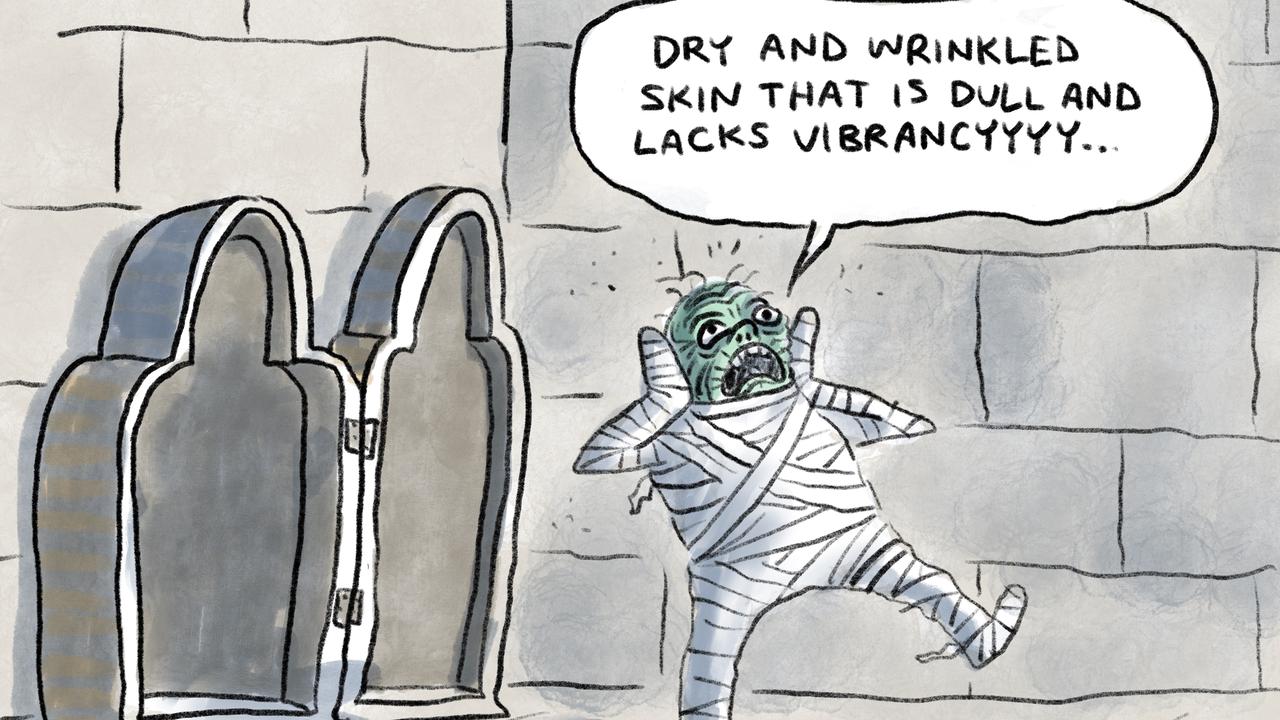
The Paris climate conference is shaping up as an epic and politically defining triumph for the Coalition government led by Malcolm Turnbull.
Following the policies developed under Tony Abbott, the government has presented an ambitious emissions reduction target that has won international acceptance. It has spooked Labor into a classic overreach in reaction.
Perhaps most amazing, the policy has united Left and Right within the Coalition. It is coming at a modest cost to the budget and the economy, and in contemporary Australia is an almost unique fusing of reform policy with painstaking, deft execution.
It didn’t come about by accident. It represents something of an eight-year odyssey, perhaps a lifetime’s odyssey, by Environment Minister Greg Hunt.
If Turnbull wins the next election it will probably mark the end forever of Labor’s commitment to a carbon tax or an emissions trading scheme. Hunt’s mechanism will be established. And if it does the job at the lowest available cost, Labor will end up adopting the same scheme, but promising to make it better.
The politics of all this are profoundly instructive. If Turnbull does win, he will owe a substantial chunk of that victory to Hunt’s relentless work.
A huge part of Hunt’s achievement has been to recruit two wildly different leaders, Abbott and Turnbull, to his central policy framework. He has a close relationship with both men. His work with Abbott when he was leader protected his policy from attack by the Right, and now Turnbull’s ascension to the leadership has allowed him to claim international credibility and ready acquiescence by all but the most extreme ends of the Greens-ABC continuum in Australia.
First, consider Australia’s commitments at Paris. Australia has signed on to reduce carbon emissions by 2030, compared with 2005 levels, by 26 to 28 per cent. As Turnbull told the assembled world leaders, this means Australia’s per capita reduction in emissions will be the second highest in the developed world.
Over the same period, South Korea will commit to reducing its emissions by 4 per cent, Japan by 25 per cent, the US by a similar amount to Australia, Canada and New Zealand by slightly more, and the European Union by 34 per cent. But China’s emissions will increase by up to 150 per cent, Turkey’s by more than 200 per cent, Russia’s by 60 per cent, Argentina’s by nearly 40 per cent.
Australia will reduce its energy intensity — the amount of energy used per unit of gross domestic product output — over this period by a whopping 65 per cent. It already has the highest percentage of households with solar panels of any nation.
Australia contributes just 1.3 per cent of global emissions and is the 14th largest emitter. By 2030 we will be the 25th largest emitter. No reasonable person could call this an inadequate effort.
The structure of our economy is unique. No other developed economy relies so much on mining and energy exports, and almost no other developed economy has population growth comparable with Australia. That is why the per capita reduction is so dramatic.
Hunt’s kit bag of policies, through which he has assembled these carbon reduction targets, is based on a reverse auction scheme to buy emissions cuts at the lowest possible price; a renewable energy target; direct regulation such as higher fuel efficiency standards for vehicles; and an important safeguards mechanism so that reductions bought at the reverse auction cannot be lost elsewhere in a company’s activities.
If Australia falls just short of the 2030 target, Hunt has introduced another element of flexibility. The policy will accommodate a marginal purchase of carbon credits from international trading schemes. There is every reason to be extremely sceptical of the efficacy and integrity of such schemes, but a marginal purchase to cover a marginal shortfall would represent a modest cost to the budget and allow a future government a fail safe mechanism to ensure the target is met.
The policy is pragmatic and effective but the tale of political management behind it has an epic quality rare in Australian politics.
Hunt is a genuine environmentalist and has been studying the politics and economics of environmental management since his undergraduate days. He watched with dismay as the Howard government was flayed over its refusal to sign the Kyoto Protocol even though it met the Kyoto targets. This was a rare example of gross political misjudgment under Howard.
At the time, Hunt felt the Howard government had overshot on Work Choices and undershot on climate change, especially the symbolism of climate change. Rejecting the symbolism meant that the public was inclined to believe the Liberals didn’t take the science of climate change seriously.
In 2007, after Howard’s big election loss, Hunt voted for Turnbull in the leadership contest between Turnbull and Brendan Nelson. Nelson won the ballot and, somewhat to Hunt’s surprise, appointed Hunt as environment spokesman.
In the leadership spill between Nelson and Turnbull, Hunt again voted for Turnbull. In 2009, Turnbull lost the leadership to Abbott over Turnbull’s support for Kevin Rudd’s proposed emissions trading scheme.
In the run-up to this searing Liberal brawl, Hunt could see that the ETS was becoming insupportable in the Liberal Party and totally toxic among the Nationals, and that it threatened Turnbull’s leadership. He proposed his reverse auction scheme as an alternative for Turnbull. Scott Morrison also told Turnbull the ETS would kill his leadership.
Turnbull didn’t take the advice of either Hunt or Morrison. Nonetheless, Hunt and Morrison both voted for Turnbull against Abbott.
After this leadership ballot, Hunt was surprised that Abbott asked him to stay on as environment spokesman. Doing this, and making Morrison the immigration spokesman, were the two critical personnel decisions Abbott got absolutely right in opposition.
Abbott won a handsome victory in 2013 and the two biggest issues were boatpeople and the carbon tax. Hunt and Morrison won their policy debates in the court of public opinion despite almost total elite and ABC hostility to the positions they put. The policy mastery of both men was essential in bolstering Abbott’s ability to prosecute both issues, which he did with great effect.
When Abbott asked Hunt to stay on, Hunt said he would do so only on certain conditions. Namely, he would endorse climate change science. He would never question or oppose the basic science. But he would strongly oppose an ETS or a carbon tax. Abbott readily agreed.
Hunt’s policy considerations were genuine, but his acute political insight was simple. When the debate was over belief in the science, Labor won. When the debate was over electricity prices, the Coalition won. The Coalition had to convince the public that it took the science seriously.
Abbott has been greatly verballed over a remark in answer to a question at a private function where he said words to the effect that some aspects of the debate around climate change, or the notion that everything about it was certain, were “absolute crap”.
As with most things concerning Abbott, the most toxic and dishonest interpretation of the reported remarks was assumed, and it was wrongly held that Abbott thought the basic science of climate change was “absolute crap”. This misrepresentation was very damaging to Abbott. In fact, as opposition leader and as prime minister, Abbott never made a statement repudiating the basic science of climate change and oversaw policies that have resulted in Australia making substantial commitments in Paris.
What happened in the personal dynamics after the 2009 leadership change was crucial. Hunt and Abbott developed a very close working relationship and indeed a friendship. Hunt spent hours and hours working through his policy proposals with Abbott. He didn’t get everything he wanted and he certainly didn’t get it all at once, but he convinced Abbott and he got the substance.
Every part of the Coalition’s developing policy was worked through exhaustively at shadow cabinet and partyroom meetings, and then in government through cabinet processes and partyroom meetings. Hunt developed a deep regard for Abbott, so much so that when the leadership spill came a couple of months ago, Hunt not only voted for Abbott but walked into the Liberal Party meeting as part of the group that accompanied Abbott to show their support.
There is nothing inherently dishonourable about Liberals voting for either candidate in the leadership spill. However, it is instructive that Hunt voted for Turnbull when he was the incumbent leader, with a strong chance that such a vote would hurt his career. Then he voted for Abbott when Abbott was the incumbent, but was clearly going to lose, and with a strong suspicion that voting for Abbott was unlikely to help his career.
However, over the two years of Abbott’s prime ministership, Hunt was also in regular dialogue with Turnbull. This also turned out to be crucially important.
Hunt had a lot of politics to manage on these issues. The public suspected that Abbott didn’t endorse the science, and it also suspected that Turnbull didn’t endorse the Coalition’s policy.
In fact, Hunt had brought both men to accept the same policy outcome. No one can doubt Turnbull’s intelligence and deep policy grasp. He, too, had seen the shambles and the sham of ETS schemes around the world.
It is a tribute to the gullibility of Australian commentators that they constantly refer to the content-free, Potemkin-village Chinese regional ETS schemes and the notional future national Chinese ETS scheme as though these were real, functioning markets. They are nothing of the kind. Almost no trade takes place, no economic activity is affected. But the existence of a sham scheme allows the Chinese to hoodwink the gullible on ABC-type networks around the world into believing that they are taking big action.
I am not suggesting Turnbull holds such robust views, but he has changed his mind on the virtues of an ETS approach to reducing greenhouse gas emissions. As Turnbull has frequently told parliament, it is producing emission reductions that is the key, not what mechanism you use.
Labor is wrong to think Turnbull has abandoned a serious commitment to reducing emissions.
As Turnbull told parliament in October: “A regulatory system that does cut emissions is very good, because it does the job. The fact is that emissions trading schemes have worked better in theory than in practice over the last six or seven years. That is undoubtedly correct.”
Hunt has assembled his emissions reductions, which have allowed Australia to already meet its 2020 target, from a wide range of sources. The two reverse auctions have secured 93 million tonnes of emissions cuts at an average price of $13 a tonne.
Hunt has got the landfill people to buy a swag of credits from the UN, and he’s toughening vehicle emissions standards. The renewable energy target means less electricity generated by coal. There is also the prospect of retrofitting old coal-fired power stations
All of this has had its effect on Labor. Having demonised the Coalition’s approach, and in danger of losing inner-city seats to the Greens, Labor felt it had to radically outbid the Coalition. Bill Shorten’s Labor, in announcing an aspiration to increase Australia’s emissions cuts to 45 per cent by 2030, has given itself a massive and unachievable de facto target.
The Australian National University economist Warwick McKibbin has supplied the devastating analysis that to achieve a reduction in emissions on this scale Labor would need a carbon tax of $200 a tonne. Imagine the role of this figure in the next election.
When Abbott became Liberal leader, no one would have predicted that a few years later Australia would embrace the second largest per capita greenhouse gas emissions reductions in the OECD.
Nor would they have predicted that Turnbull would abandon the ETS approach and reap the benefits.
This has been a sustained masterclass by Hunt in the political possibility of measured reform. Its consequences could shape Australian politics for years.







To join the conversation, please log in. Don't have an account? Register
Join the conversation, you are commenting as Logout